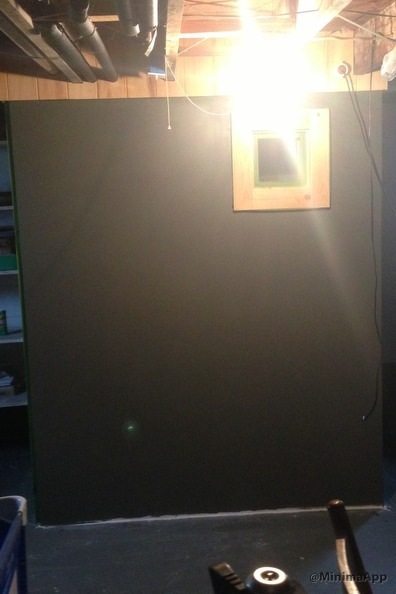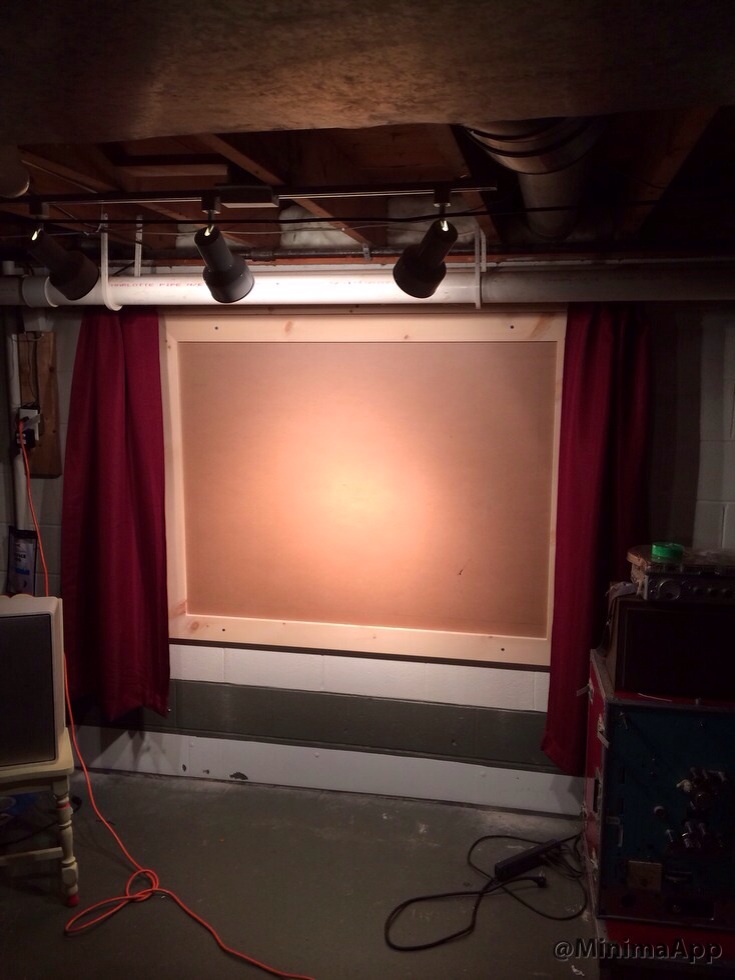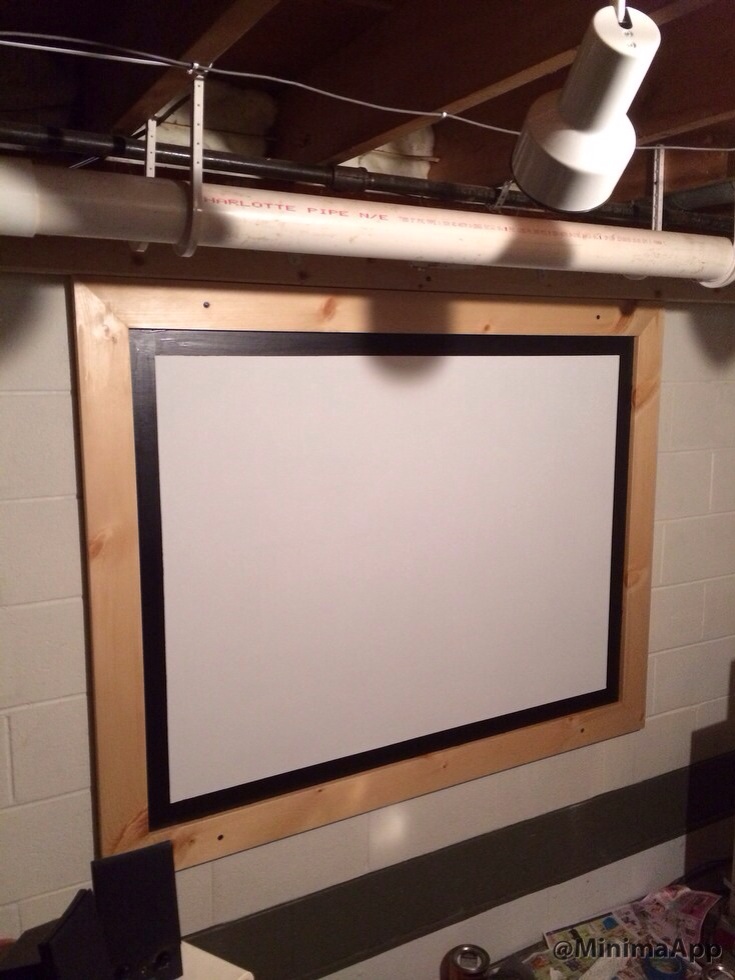|
|
 
|
|
Author
|
Topic: Screen for home theatre
|
|
|
Scott Norwood
Film God

Posts: 8146
From: Boston, MA. USA (1774.21 miles northeast of Dallas)
Registered: Jun 99
|
 posted 05-16-2013 02:12 PM
posted 05-16-2013 02:12 PM





On drop-down screens:
Drop-down screens (any kind of roll-up screen, actually) will eventually sag in the middle. Tab-tensioned screens are one way to prevent this, but are expensive; a "proper" screen should be supported on all four sides (as with a cinema screen, which is supported with lacing or with springs), but this is not possible for a drop-down/roll-up screen.
You will have a difficult time finding a perforated drop-down screen, which would allow you to put the loudspeaker behind it for realistic sound.
Da-Lite and Draper are the two big names for this type of screen. Both are good. There are other manufacturers as well.
On aspect ratio:
You probably want a 1.33:1 (also known as 4x3 by video people) for 16mm, as most 16mm prints are in that format. The exception would be if you have any Cinemascope prints, in which case you would want a 2.66:1 screen with some sort of masking system to allow you to mask in the sides of the image.
The 1.78:1 (aka 16x9) ratio is a video format only, although it could be a reasonable compromise for both 1.33:1 and 2.66:1 films if you have a masking system for both the sides and the top/bottom. If you do this, you will need a different (longer) prime lens for Cinemascope than you will for flat films.
On screen surface:
This will depend on your room dimensions. For a square-ish room, you will want a matte-white (1.0 gain) screen, as it provides the best image quality and light dispersion.
Gain screens (greater than 1.0 gain) reflect more light back to the source and less to the sides of the room; they appear brighter than matte screens to viewers seated in the center of the room, but dimmer to those seated on the edges. For a long, narrow room, these might be worth considering, especially if your image is dim.
Silver screens have extremely high gain, and really should only be used for polarized 3D, which I assume that you are not doing. They are also easy to damage and quite expensive.
Grey screens (gain < 1.0) exist, but are designed for video use in an attempt to increase the apparent contrast range of the image. These are irrelevant to you.
On screen sizes:
The usual recommendation is to have the audience seated 2-4x the screen height. Since you are using 16mm and since 16mm lenses are usually only available in a limited range of focal lengths, you should probably calculate the possible screen sizes with the available lenses and pick one of them. You do not want to be stuck between lens sizes.
Other stuff:
You probably want to get a theatrical dimmer (variac or maybe a Kelmar cinema dimmer). Regular dining-room-style dimmers do not dim through the entire range and tend to "pop" on at about 30% when raised from 0%).
Movie posters are all over Ebay, usually at reasonable prices.
I know nothing about popcorn machines, but that would be a fun addition.
| IP: Logged
|
|
Randy Stankey
Film God

Posts: 6539
From: Erie, Pennsylvania
Registered: Jun 99
|
 posted 05-16-2013 02:58 PM
posted 05-16-2013 02:58 PM




For a home theater setup, I might consider a sheet of 3/8" MDO plywood painted flat white.
Screw it to the wall, put a nice frame around it then put curtains on a traveler track above the screen so you can open and close them to get different aspect ratios.
In a small room, it shouldn't be a problem if you put the speakers on the floor, under the screen.
For the curtains, get a velour material and sew a 3" black strip on the leading edges. Weight the bottoms of the curtains so they hang taught. Set the travelers so the curtains close and completely overlap to hide most of the black strip.
When it's movie time, pull the cord to draw the curtains open to predetermined locations, based on the screen ratio you want. When the movie is over, draw the curtains all the way closed. It will look like a window with the drapes drawn shut.
Get some track lights. Put them on the ceiling, pointing down at an angle toward the screen. Put them on a dimmer.
That way you can make a real, old-time movie presentation with the "light curtain" fading down as the drapes draw open.
Motorized drapes and a home automation system could make it so all of this happens by remote control. It would be very cool! ![[Cool]](cool.gif)
| IP: Logged
|
|
|
|
Randy Stankey
Film God

Posts: 6539
From: Erie, Pennsylvania
Registered: Jun 99
|
 posted 05-16-2013 04:28 PM
posted 05-16-2013 04:28 PM




The lights should shine down, toward the screen at a 30º or 45º angle so they make parabolas on the curtain. Up or down, it doesn't really matter. Most people put them on top so as to keep them out of the way but I've seen "curtain warmers" go both ways.
Frame the screen in a complimentary color to the wall. Something that looks nice but doesn't stand out. You don't want it to show up in the dark and distract the viewer.
Inside that frame, make a black border with a nice, clean edge about 1" or 2". This will help mask off the blurry edges of the image and make the picture look nice and clean. Let the picture spill over into the black by about an inch.
The black strip along the curtain edge will allow you to make a screen that can adjust to any aspect ratio you want. Just draw them in till they meed the picture edge. Again, let the image spill over by an inch. If you want to show a movie in Scope, Flat, Academy or using a video projector, you can draw the curtains to any point you need to frame the picture.
If using a manual curtain pull, put tape marks on the pull lines. When the tape marks line up, that's a stop for a particular screen ratio. Put three or four colored marks on the pull line for different sizes. Just line up the correct color marks for the size you want.
I'm not big on roll-up screens. Like Scott said, they always sag and wrinkle, no matter how you try. A permanent, tensioned screen is best. If you don't want to do that, just use a piece of plywood and mount it to the wall.
I like MDO plywood. That's not MDF. MDO is regular plywood with one surface sanded perfectly smooth and has resin and paper bonded to it. You can paint it and it will be perfectly smooth and flat. (MDF is made up of wood strands and has a rough surface.)
Use a good, quality flat, white indoor paint. You'll get about as good a screen surface as can be had without spending a boat load of money.
The only reason I'd use a motorized, roll-up screen is if it had to be completely out of the way when not showing movies. But, if this is a "home theater" it won't matter if the screen is visible.
| IP: Logged
|
|
|
|
|
|
|
|
|
|
All times are Central (GMT -6:00)
|
|
Powered by Infopop Corporation
UBB.classicTM
6.3.1.2
The Film-Tech Forums are designed for various members related to the cinema industry to express their opinions, viewpoints and testimonials on various products, services and events based upon speculation, personal knowledge and factual information through use, therefore all views represented here allow no liability upon the publishers of this web site and the owners of said views assume no liability for any ill will resulting from these postings. The posts made here are for educational as well as entertainment purposes and as such anyone viewing this portion of the website must accept these views as statements of the author of that opinion
and agrees to release the authors from any and all liability.
|

 Home
Home
 Products
Products
 Store
Store
 Forum
Forum
 Warehouse
Warehouse
 Contact Us
Contact Us




 Printer-friendly view of this topic
Printer-friendly view of this topic








![[Cool]](cool.gif)





